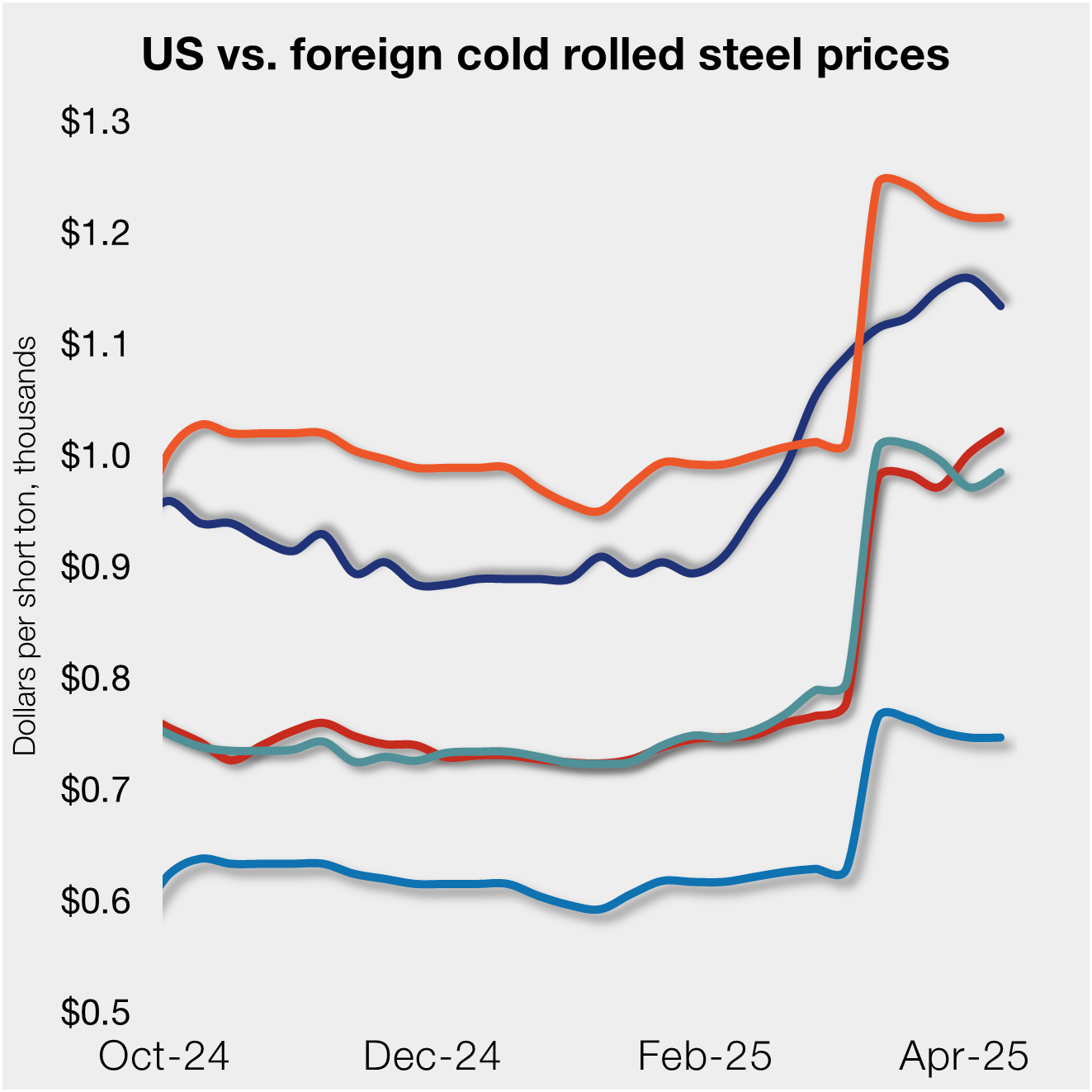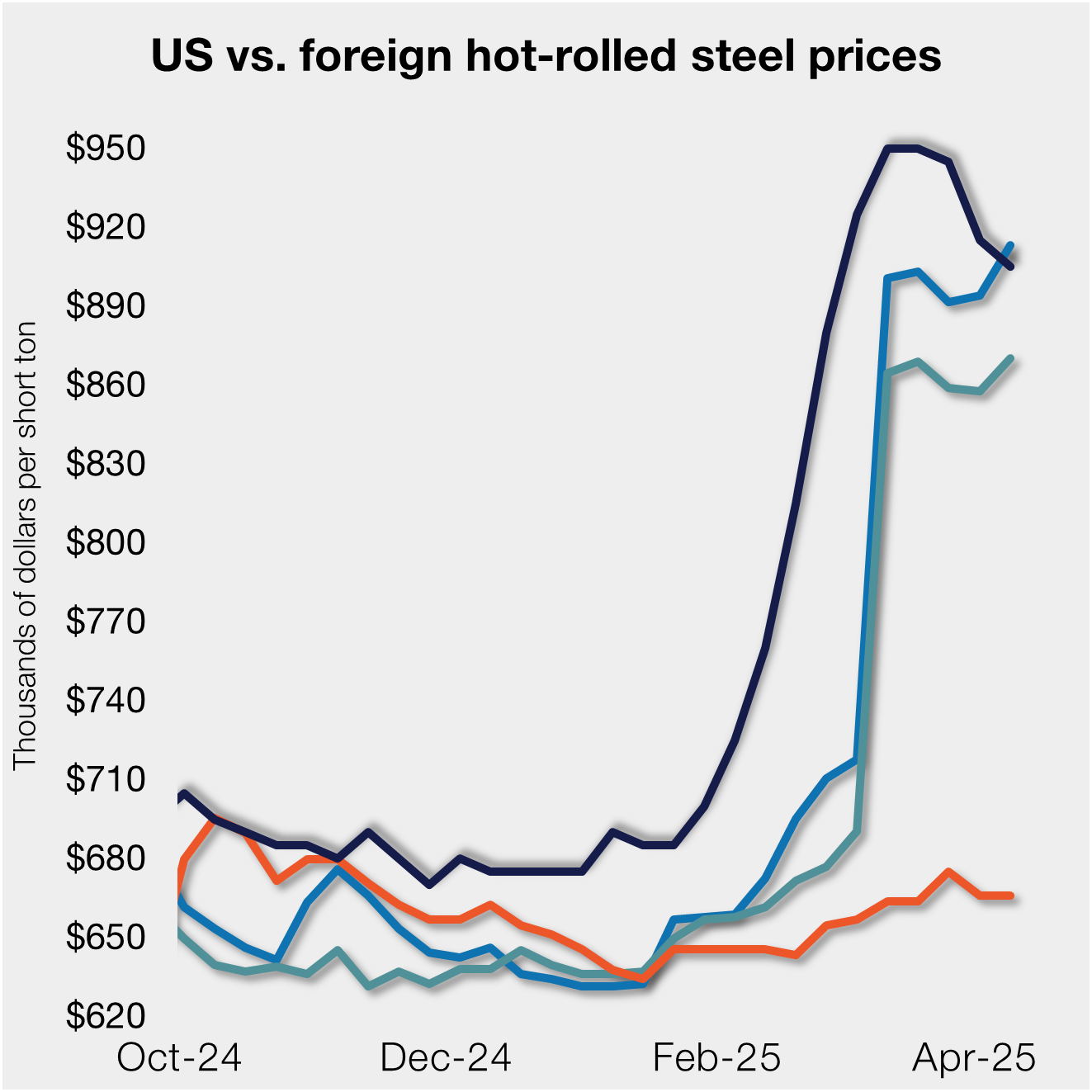Steel Products

Sharply Contrasting Views on Section 232
Written by Sandy Williams
January 16, 2018
Emotions are running hot as the market awaits President Trump’s decision on Section 232, and whether to impose new trade restrictions on steel imports for national security reasons. Sharply contrasting comments recently from Dan DiMicco and Richard Chriss serve to bookend both sides of the issue.
DiMicco, the former CEO of Nucor and current trade advisor to President Trump, speaks for supporters of the measure when he argues that strong trade enforcement measures are needed: “The 232 is one of the few things the president could implement that would have a real chance of ending the ‘cycle’ of illegally dumped steel, etc., that has plagued our industry for decades. A cycle made infinitely worse by China’s mercantilist trade practices. It needs to be strongly punitive and lasting.”
Chriss, president of the American Institute for International Steel, (which represents the interests of foreign steel producers), summed up the sentiments of opponents:
“The national security of the United States depends on steel – both domestically produced and imported. As President Trump reviews the Section 232 report submitted by the Department of Commerce, he would do well to remember the value that quality affordable steel produced overseas provides to this country and the costs that would be incurred by restricting their import.
“Imported steel is found in defense and weapons systems and national critical infrastructure, as well as throughout the private sector. The global market enables governments and businesses to acquire steel at competitive prices, lowering federal, state and local spending and boosting the economy. Yet, while steel is critical to national security, defense accounts for only about 3 percent of the nation’s total steel consumption. In a crisis, then, domestic manufacturers could, if necessary, boost their production to meet any new requirements. Even in the event of a crisis, though, there is little reason to think that the supply of foreign steel would be cut off, since most imports come from friendly nations.
“Imposing tariffs or quotas on steel imports certainly invites retaliation by other countries. One does not need to be an expert on the early-20th century Smoot-Hawley Tariff Act to know that abandoning the principles of free trade can spark a trade war and, potentially, a global recession or worse. And economic instability is often a proximate cause for violent conflict.
“Imposing tariffs and quotas on steel imports would put both national and economic security at risk. The American Institute for International Steel urges President Trump to reject protectionism and, instead, continue the longstanding free trade policies that preserve and enhance U.S. interests,” Chriss said in a statement Jan. 16.
{loadposition reserved_message}

Sandy Williams
Read more from Sandy WilliamsLatest in Steel Products

CRU tariff webinar replay now available
CRU’s latest webinar replay on how Trump’s tariffs affect the global steel market is now available on our website to all members. After logging in at steelmarketupdate.com, visit the community tab and look under the “previous webinars” section of the dropdown menu. You’ll find not only this special CRU webinar but also all past Community […]

US, offshore CRC prices diverge
US cold-rolled (CR) coil prices declined this week, slipping for the first time since early February. Most offshore markets deviated, moving higher this week.

Construction growth slowed in March on tariff woes: Dodge
The decline comes after reaching a record high in January to kickstart the year.

Return of S232 zapped gap between US and EU HR prices, Asian HR remains cheaper
Domestic hot-rolled (HR) coil prices declined this week for a third straight week. Most offshore markets bucked the trend and gained ground. Uncertainty in the US market around tariffs, especially after “Liberation Day,” caused US prices to slip as buyers moved to the sidelines. It’s unclear to date whether the 90-day pause on the more […]

SMU Steel Demand Index momentum slows further
SMU’s Steel Demand Index growth eased again, according to early April indicators. The slowdown comes after the index reached a four-year high in late February.
